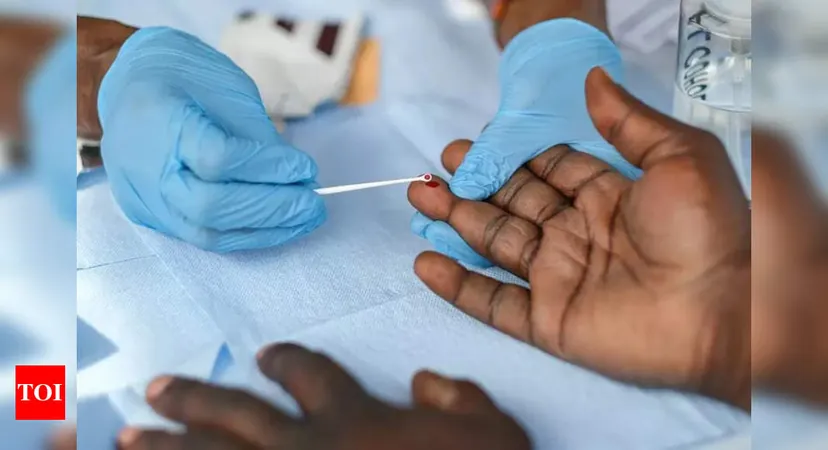
Shocking Dropout Rates in Hepatitis C Treatment in Punjab: What's Going Wrong?
2025-04-14
Author: Nur
Chandigarh is facing a troubling reality as a recent study reveals that many patients in Punjab are discontinuing their Hepatitis C treatment due to a troubling lack of awareness and counseling. The findings from this joint research, conducted by local health officials and international experts, shed light on the depths of the issue.
Despite Punjab's Hepatitis C prevalence soaring above the national average, the system has massive gaps in patient education. Over 60,000 individuals were enrolled in a free treatment program, yet more than 10% mysteriously dropped out before completing their course. What’s causing this alarming trend?
The study, involving interviews with 475 individuals who halted their treatment, highlighted that a staggering 89.4% of participants were men, predominantly young, with 58.7% aged between 18-35 years. Women were notably older, with 72.0% being 46 years or more. The majority of respondents were married, especially women, where 98% were in matrimony.
With educational backgrounds showing that 87.4% of participants had completed only secondary education or less, this lack of knowledge appears critical. The study found that most men worked in agriculture or services, while many women remained unemployed or were homemakers.
Intriguingly, 80.6% had no personal connection to others diagnosed with Hepatitis C, and most (87.8%) did not have additional health issues, although some reported being HIV-positive. Testing reasons varied; half had routine check-ups, while a smaller fraction had symptoms prompting them to seek tests.
Among those prescribed treatment, 83.8% were advised a 12-week regimen, but an eye-popping 48% failed to return for their first refill after one month. Among those on a longer 24-week treatment, 67% never returned post the third monthly refill. Most dropped out, citing they felt better and viewed treatment as unnecessary.
Other reasons for discontinuation highlighted include frequent relocations (20.0%), personal commitments (14.5%), lack of medication availability, and poor hospital staff treatment. Notably, more men reported logistical reasons for halting their treatment.
In terms of awareness, only 49.5% recognized the severe consequences of Hepatitis C, and a shocking 93.5% were unaware of the side effects of direct-acting antivirals. An overwhelming 63% could not grasp the dangers of stopping treatment prematurely.
Despite the setbacks, an encouraging 70% expressed interest in resuming their treatment, signaling a desperate need for intervention. The study, published in the Indian Journal of Public Health, underscores a dire need for enhanced patient support and policy reform to combat these dropout rates.
Healthcare experts are now advocating for digital solutions and targeted support systems to bridge these gaps in understanding and treatment. If Punjab hopes to eliminate Hepatitis C, addressing these dropout rates is not just necessary—it’s crucial.


 Brasil (PT)
Brasil (PT)
 Canada (EN)
Canada (EN)
 Chile (ES)
Chile (ES)
 Česko (CS)
Česko (CS)
 대한민국 (KO)
대한민국 (KO)
 España (ES)
España (ES)
 France (FR)
France (FR)
 Hong Kong (EN)
Hong Kong (EN)
 Italia (IT)
Italia (IT)
 日本 (JA)
日本 (JA)
 Magyarország (HU)
Magyarország (HU)
 Norge (NO)
Norge (NO)
 Polska (PL)
Polska (PL)
 Schweiz (DE)
Schweiz (DE)
 Singapore (EN)
Singapore (EN)
 Sverige (SV)
Sverige (SV)
 Suomi (FI)
Suomi (FI)
 Türkiye (TR)
Türkiye (TR)
 الإمارات العربية المتحدة (AR)
الإمارات العربية المتحدة (AR)